|
TRANSLATE THIS ARTICLE
Integral World: Exploring Theories of Everything
An independent forum for a critical discussion of the integral philosophy of Ken Wilber
 Barclay Powers is an author and futurist filmmaker. He earned
his Bachelor of Arts in East Asian Studies from Columbia University
and has an extensive background as an independent scholar. He has
studied Chinese, Tibetan and Indian meditation, yoga and martial arts
traditions for more than 30 years. Powers is currently releasing
multiple media projects worldwide in film and print, related to the
evolution of consciousness based on his studies with numerous
masters of ancient wisdom traditions. His most recent film, The Lost
Secret of Immortality, based on his book, won best
spiritual/religious/Christian film at the Great Lakes International Film
Festival, 2012, the Silver Palm Award at the Mexico International Film
Festival, 2012 and best spiritual documentary at the New York
International Film Festival, 2011. See his website at
www.lostsecretofimmortality.com for information on the book,
graphic novel and film. Barclay Powers is an author and futurist filmmaker. He earned
his Bachelor of Arts in East Asian Studies from Columbia University
and has an extensive background as an independent scholar. He has
studied Chinese, Tibetan and Indian meditation, yoga and martial arts
traditions for more than 30 years. Powers is currently releasing
multiple media projects worldwide in film and print, related to the
evolution of consciousness based on his studies with numerous
masters of ancient wisdom traditions. His most recent film, The Lost
Secret of Immortality, based on his book, won best
spiritual/religious/Christian film at the Great Lakes International Film
Festival, 2012, the Silver Palm Award at the Mexico International Film
Festival, 2012 and best spiritual documentary at the New York
International Film Festival, 2011. See his website at
www.lostsecretofimmortality.com for information on the book,
graphic novel and film.SEE MORE ESSAYS WRITTEN BY BARCLAY POWERS The Convergence of Contemplative NeuroscienceAnd the Original Goal of Inner Alchemical MeditationBarclay Powers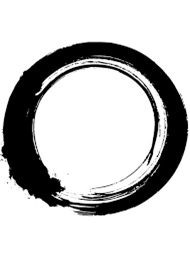 When the concept of inner illumination is explored from the perspective of Western medicine and neuroscience, the necessity of a rational explanation of “enlightenment” becomes obvious. This has been the experience of many scientists who also practice yoga and other non-theistic meditation traditions. The purpose of this article is to propose a 21st Century cross-cultural model of the goals of meditation and yoga by introducing a more accurate translation of Chinese and Indo-Tibetan contemplative traditions than is currently accepted by Western science. Understanding that many of the core meanings of the terms of Eastern and Western inner alchemy are describing the same phenomena in different words may be the royal road forward for transpersonal psychology. 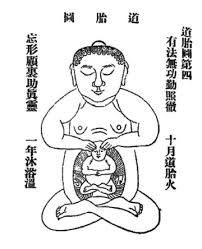 As consciousness studies, contemplative neuroscience and psychedelic brain research continue to advance in the West, a functional explanation of the original goal of meditation has yet to emerge. Both Chinese and Indo-Tibetan proto-science medical models describe the goal of Eastern meditation and yoga practice as a whole-body process of awakening. Western brain researchers have not successfully identified the “primitive knot” formed in early embryonic development with the concept of the “original face,” or “embryo of enlightenment,” which is seen, recognized and observed to dissolve into nothingness when successfully activated. This is the actual reason for all of the mirror symbolism in Mahayana and Vajrayana Buddhism, and is why the “mirror like wisdom” represents the deepest level of consciousness in many non-theistic contemplative traditions. 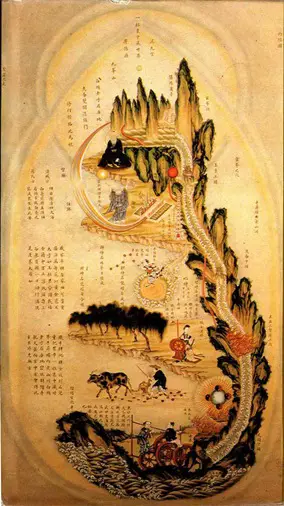 White light experiences, sleep paralysis, and cessations of the default mode network (the ego-self) have all been explained relatively satisfactorily by Western neuroscience. However, these experiences are often misinterpreted, or assumed to be the goal of meditation by researchers. Confusing the picture further, many of the Eastern contemplative traditions often disagree on goals, and in the West a watered-down or psychological self-help version predominates. In East Asia, the idea that the human body has a golden structure of consciousness that can only be seen at the completion stage of meditation is the basis of the Chinese model of returning to “original mind,” the post-awakening non-self. 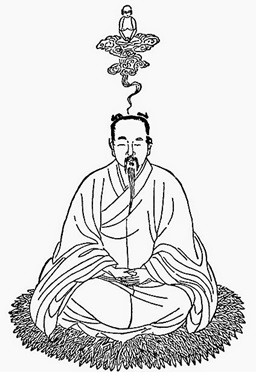 This structure of consciousness can only emerge visibly (from the inside) if the core body temperature in the lower torso is raised enough for it to “hatch,” much like the incubation of an egg. It can be predicted that the scientific discovery that the primitive knot is identical to the Buddha Nature, or embryo of enlightenment, will change the 21st Century definition of what it means to be human and fully awake. An interesting question is how early Western science lost the knowledge of the prima materia in the body, and of how and why the narrative was suppressed. As science-based secular meditation and yoga have emerged in the West, the concept of actually returning to original pre-natal or enlightened consciousness has been intentionally overlooked by researchers who cannot acknowledge, by virtue of cultural bias, that the baby has been thrown out with the bath water. Contemplative neuroscience avoids any aspect of meditation and yoga theory that can be considered “vitalist” versus its own mechanistic bias, as is required by the current Western scientific paradigm. This means that when Chinese or Indian traditions describe the golden flower, kundalini, the Buddha Nature, or original face, the Western scientist must reject the possibility as superstitious religious delusion, because of its basis in vitalism. Interestingly, the Chinese communist party did the same thing. This is the mindset to be overcome, for in fact the Taoist neidan meditation tradition, for instance, clearly explains the goal of Buddhist science as facilitating the conjunction of the central nervous system with the activated primitive knot, the origin point or prima materia within the body. This is the reason for the importance of the activation of the 1st chakra in kundalini yoga, and the lower dantian in tai chi chuan and chi kung. 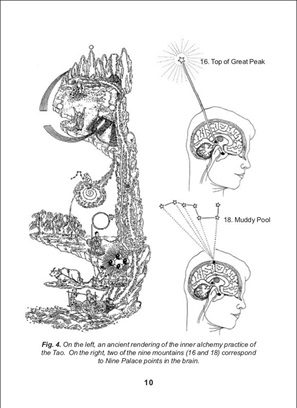 The rarity of the illumination event itself has contributed to current contemplative neuroscience researchers not realizing that the “image of the golden flower” must travel from the beginning point of the spine to conscious recognition by the visual cortex via the vagus nerve or other pathways. This is a cutting edge area of research, for the correlation of neurological and energetic pathways between the central nervous system and the gut “brain” has only begun to be understood in the last 20 years, with the vagus nerve, sometimes being called the Buddha nerve. This is a remarkable development because it suggests that the physiological root of the unconscious, which is united with the brain by the alchemical process, lies dormant within the lower torso of every human being. There are four stages of meditation: jing to chi, chi to shen, shen to void, void to Dao. The first part of the process activates the lower dantian, and the last two stages activate the upper dantian and illuminate the brain. This means the Dao pre-exists within the body. The conjunction of true yin and true yang shen, post-natal and pre-natal consciousness, activates the pineal gland or niwan (nirvana), point in the brain. Western science is forced to assume that this scientific process, that has been successfully repeated by thousands of individuals, is a cultural myth without factual basis. The yoga and meditation models of awakening, when interpreted by the West, are based on the idea of the conscious mind fully uniting with the unconscious psyche. This has led, in regard to the current revival of research into the medical use of psychedelics, to these agents being defined as non-specific amplifiers of the unconscious. The future of psychedelic science and brain research is potentially the rediscovery of an endogenous hallucinogen that returns the brain/mind to its original whole state when successfully activated by meditation, yoga, chi kung and tai chi chuan. This is the Buddha Nature, or embryo of enlightenment. 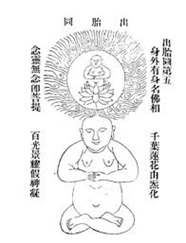 It has been mentioned in this article that the development of a science of awakening or higher consciousness is currently hamstrung by incomplete narratives in the Western scientific worldview. Two giants of the 20th Century, Einstein and Gandhi, made it clear that we must continuously expand our thinking if we are to understand and realize our ultimate human potential. Scientists who find themselves perched on the edge of new thinking in an emerging post-modern world, may take notice of the openings offered by the current convergence of contemplative neuroscience, and the original goal of meditation. A scientific explanation of gnosis may represent the rediscovery of the authentic meaning of the Philosopher's Stone (infans solaris). 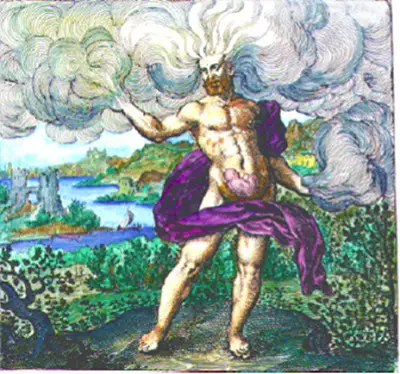 “[The unconscious] … potentially contains that 'round' wholeness which consciousness lacks, it is the most significant of all. This 'round' thing is the great treasure that lies hidden in the cave of the unconscious, and its personification is this personal being who represents the higher unity of conscious and unconscious.” (Carl Jung, Collected Works, Vol 9 (Part 1), Page 142.) (Note fetus in lower abdomen.) |